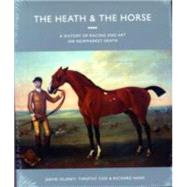The first part provides a broad chronological history of the heath – from its discovery by James I in 1605 to the present day – and examines its relationship with and influence on racing nationally. The importance of the royal court in the development of the heath, the various swings of fortune it experienced once the monarchy lost interest, and the formation of the Jockey Club to control both the heath and the sport, are traced. Also discussed are Newmarket Heath's influence in the breeding of a superior thoroughbred horse from native and eastern stock to be tested on its unique heath land, the methods of training down the centuries, and the many trainers and jockeys involved.
The second part concentrates on the heath and the Jockey Club. The topography and buildings of the heath are illustrated with maps, paintings and prints. The development of the racecourses and races are traced in detail. There is a full account of the Jockey Club, its ownership of the heath and important new research into the pre-1750s existence of the club.
Before the days of photography paintings and prints provided the only visual evidence of how racing was conducted and what Newmarket looked like. Many of the pictures here reproduced show a general racing scene or the portrait of an unnamed horse. In a special feature the authors have analysed ten pictures in forensic detail to provide a richer understanding of the historic record.









